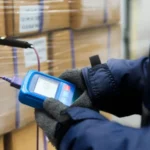In the fast-paced world of logistics, delivering cargo swiftly and smoothly is both an art and a science. The challenge lies not just in the speed of transportation but also in ensuring that efficiency doesn’t come at the expense of reliability. Fast-delivery cargo services must navigate a complex landscape of tight deadlines, intricate routing, and real-time tracking while adapting to unforeseen disruptions like weather or traffic. Balancing these demands requires cutting-edge technology, meticulous planning, and a commitment to customer satisfaction, making the pursuit of lightning-fast delivery as dynamic as it is essential.
Fast Delivery Cargo Services: Rapid Cargo Transport for Efficient Delivery
With digital adoption and innovative solutions, fast-delivery cargo services aim to execute next- and same-day deliveries seamlessly. In this process, the product goes through the shipping process the same day after the order placement. There are many variants of quick delivery service models like same-day delivery, 30-minute delivery, or 10-minute delivery, which means that every stage of fast delivery cargo, from order capture, bagging, and routing to delivery, happens within a fraction of a second. Quick delivery service or faster order fulfillment is a crucial differentiator for the success of a service provider.
Different Stages of Fast Delivery Cargo Services
- When a customer places an order, the Delivery Management System is notified of the details required for a fast cargo courier.
- The delivery management system’s automated order allocation engine categorizes orders based on delivery type, assigns them automatically after considering various optimization constraints, and then forwards them to the Driver App for execution. Utilizing built-in AI and ML algorithms, this process significantly enhances operational excellence for express document delivery.
- After the rider receives a notification on the driver app, they collect the order from the vendor or the store for delivery. Drivers within the geo-fenced pickup area are assessed based on various factors, including order consolidation, rider compensation, and vehicle type.
- The driver app updates the delivery management system and the customer with real-time status, enabling real-time tracking notifications for both orders and vehicles. The quick delivery service management system allows managers to monitor and manage active riders, sending alerts if a driver deviates from the recommended route.
- After the driver completes the doorstep delivery and collects cash on delivery (COD) or online payments, a notification along with an electronic proof of delivery (ePOD) is sent to the quick delivery service system. This confirms the order’s completion to all stakeholders involved in fast courier and cargo services.
- Finally, the system offers analytics on delivery times, payment methods, and any reasons for delays, providing this information to all parties involved.
Operational Challenges Faced by Service Providers During Fast Cargo Delivery
Fast cargo delivery services face several challenges that test their efficiency and reliability. The pressure to meet tight deadlines often clashes with logistical hurdles such as unpredictable traffic conditions, adverse weather, and complex routing demands. As the demand for rapid delivery grows, addressing these challenges becomes increasingly critical to ensuring smooth and dependable service.
- Poor Efficiency in Operations: It is crucial to ensure that riders are consistently available to meet on-demand delivery schedules to achieve rapid commerce and same-day deliveries. Without proper automation, businesses face challenges in efficiently assigning orders based on location, cost, and the nearest available delivery agent.
- Lack of Integrated Automation for Managing the Stakeholders: Manual delivery management systems often have limited integration with third-party systems, such as POS, OMS, WMS, or ERP. Businesses that do not prioritize automated integration face difficulties with timely pickups, order allocation, real-time tracking, and a lack of notifications about doorstep delivery statuses or failed delivery attempts.
- Fluctuating Market Demands: Product demand is rarely consistent, often spiking during seasonal sales, holidays, and peak times. Without advanced platforms, managing inventory and stock becomes challenging for baggage shipping services. Running out of stock during high-demand periods can negatively impact revenue and brand reputation.
- Shorter Delivery Windows: Fast freight courier aims to fulfill orders within tight timeframes, often 30 minutes or less. Traditional or outdated systems struggle to meet these urgent deadlines. Each order undergoes multiple steps before reaching its destination, and inefficiencies or mismanagement during these processes can significantly reduce profit margins.
- Inability to Optimize the Vehicle Use: Without robust delivery management, automation, planning multi-stop deliveries, and optimizing vehicle use becomes cumbersome. Manual routing often leads to longer routes and fails to account for unforeseen events like accidents or vehicle breakdowns, causing delays in deliveries and leading to an increase in total cost of ownership (TCO).
Fast-delivery cargo services are essential for meeting the demands of a fast-paced market, but they come with their challenges. Effective management of these services requires advanced technology, strategic planning, and real-time tracking to overcome obstacles, such as route optimization, inventory management, and unforeseen disruptions. By leveraging automation and data analytics, Travelite enhances efficiency, minimizes delays, and improves customer satisfaction, which makes it a reliable service agency for door-to-door international shipping.










